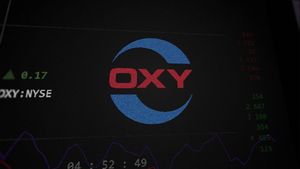
ConnectM Technology Solutions (OTCQB: CMMU), a company specializing in green energy technology, has officially transitioned its trading to the OTCQB Venture Market, effective October 2, 2025, following its delisting from the Nasdaq stock market in May 2025. This significant shift marks a challenging period for the Marlborough, Massachusetts-based firm, which faced a series of compliance failures that ultimately led to its removal from the prestigious exchange. The move has immediate implications for shareholders, signaling reduced market visibility, liquidity, and a potential erosion of investor confidence.
The delisting stems from ConnectM's (OTCQB: CMMU) inability to meet Nasdaq's stringent listing requirements, including minimum market value and bid price, compounded by delayed financial filings and underlying financial instability. While a setback, the company's swift uplisting to the OTCQB from the lower-tiered OTC Pink Open Market reflects management's efforts to maintain a structured trading environment and rebuild investor trust. This transition forces a re-evaluation of ConnectM's (OTCQB: CMMU) strategic trajectory and its ability to navigate the demanding landscape of the electrification economy from a less prominent trading platform.
A Timeline of Compliance Failures and Market Transition
The journey to ConnectM's (OTCQB: CMMU) delisting was protracted, beginning with a notice from Nasdaq on September 4, 2024, regarding the company's failure to maintain a minimum $50 million market value for 30 consecutive business days. This was followed by another non-compliance notice on March 27, 2025, due to the stock price consistently closing below the required $1.00 per share. Further exacerbating these issues were significant delays in filing crucial financial reports, including its Quarterly Report on Form 10-Q for Q3 2024, and later, its annual report for 2024 and Q1 2025 financials. The company even admitted that its Q3 2024 report contained material errors, casting a shadow over its financial transparency.
Ultimately, Nasdaq suspended ConnectM's (OTCQB: CMMU) trading on May 8, 2025, leading to its formal delisting and an initial placement on the OTC Pink Open Market. In response, ConnectM's (OTCQB: CMMU) management, led by CEO Bhaskar Panigrahi, swiftly moved to uplist the company's common stock to the OTCQB Venture Market, a move completed on September 30, 2025, with trading commencing on October 2, 2025. Panigrahi has publicly expressed optimism, asserting that the company's fundamentals and growth prospects remain strong despite the regulatory hurdles, pointing to a reported 70% year-over-year revenue increase in Q2 2025 and significant debt reduction efforts.
However, the market's initial reaction has been stark. The delisting led to a significant decline in ConnectM's (OTCQB: CMMU) stock price and market capitalization, with shares trading around $0.01 and a market cap of approximately $784,000 as of mid-September 2025. The shift to OTCQB, while an improvement from OTC Pink, still means reduced liquidity and limited access for institutional investors who often have mandates against investing in OTC-traded securities. This creates an "information vacuum" for potential investors, making independent verification of the company's financial health challenging.
The Shifting Sands: Who Wins and Who Loses?
ConnectM Technology Solutions’ (OTCQB: CMMU) retreat from Nasdaq to the OTCQB Venture Market has created a ripple effect, primarily impacting its own standing while potentially offering opportunities for competitors in the burgeoning AI-driven electrification sector. For ConnectM (OTCQB: CMMU) itself, the implications are largely negative. The reduced market visibility and liquidity inherent in OTCQB trading will likely hinder its ability to attract significant institutional investment and could lead to lower trading volumes and wider bid-ask spreads, making it more challenging for existing shareholders to transact. The delisting also carries a significant reputational cost, potentially eroding investor confidence and making it harder for ConnectM (OTCQB: CMMU) to secure new partnerships and customers in a highly competitive market.
Conversely, several established and emerging players in the AI-driven electrification space stand to gain from ConnectM’s (OTCQB: CMMU) diminished market presence. Companies such as GridPoint, an already identified direct competitor, could directly benefit by appearing more stable and attractive to potential customers and investors. Global technology giants like Siemens and Honeywell (NASDAQ: HON), both offering intelligent solutions for smart grids and energy management, might find expanded opportunities to capture market share in specialized electrification niches. Similarly, C3 AI (NYSE: AI), with its robust enterprise AI platform for commercial energy management, could appeal to larger commercial and OEM partners seeking proven, reliable AI solutions.
Beyond these larger players, a host of innovative, often venture-backed, companies focused on AI-driven energy optimization could see increased interest. These include firms like BlocPower, which focuses on energy efficiency for buildings; Verdigris, developing smart grid technology; Peak Power, offering AI-based energy optimization software; and BluWave-ai, specializing in sustainable energy systems. Other potential beneficiaries include On.Energy, SparkCognition, Stem (NYSE: STEM) (known for its Athena AI-powered energy storage), and Hypercube, which focuses on Home Energy Management Systems (HEMS). These companies, particularly those with stronger financial backing or existing major exchange listings, may capitalize on ConnectM’s (OTCQB: CMMU) reduced access to capital and talent.
The broader green energy technology sector, especially in AI-driven electrification, continues to experience robust growth, driven by decarbonization goals and the increasing energy demands of AI data centers. ConnectM’s (OTCQB: CMMU) delisting serves as a cautionary tale for smaller, rapidly growing companies in this capital-intensive sector, highlighting the critical importance of financial stability and consistent reporting. This event might lead to increased scrutiny for similar early-stage firms, potentially favoring those with stronger balance sheets. It could also accelerate consolidation, with financially vulnerable innovators becoming acquisition targets for larger, more stable entities, as partners seek to diversify their alliances and mitigate risks.
Wider Significance and Industry Repercussions
ConnectM Technology Solutions’ (OTCQB: CMMU) delisting from Nasdaq serves as a potent reminder of the rigorous financial and regulatory gauntlet faced by smaller, high-growth companies, even those operating in strategically vital sectors like green energy and AI-driven electrification. The move underscores that innovation alone is not sufficient; robust financial health, consistent market capitalization, and unwavering adherence to reporting standards are equally critical for maintaining a presence on major exchanges. This event highlights a broader industry trend where the immense capital requirements for scaling green technologies, coupled with a sometimes skeptical investment landscape for clean energy equities, can create significant vulnerabilities for firms that fail to meet stringent market expectations.
The delisting also brings into focus the paradox of AI’s burgeoning energy demands. While AI is a powerful tool for optimizing energy efficiency and accelerating the transition to electrification—a core tenet of ConnectM’s (OTCQB: CMMU) business model—the computational intensity of AI itself puts immense pressure on existing energy infrastructure. This creates a dual imperative for companies in this space: to innovate in energy solutions while also demonstrating the financial stability to support their own growth and contribute meaningfully to a sustainable energy future. ConnectM’s (OTCQB: CMMU) struggles to maintain market value and share price, despite its innovative AI-driven energy intelligence platform, exemplify the challenges of navigating this complex landscape.
From a regulatory standpoint, ConnectM’s (OTCQB: CMMU) experience reflects Nasdaq’s increasingly stringent enforcement of listing standards. Recent rule changes have aimed to accelerate delistings for bid price deficiencies and limit companies' ability to trade during appeals, signaling a broader push to maintain market integrity and protect investors from speculative "penny stocks" on the main exchange. The OTCQB Venture Market, while a step down from Nasdaq, emerges as a crucial alternative, offering a regulated trading venue for developing companies that meet minimum reporting standards, providing a "soft landing" for firms committed to public disclosure.
Historically, delistings are not uncommon, often stemming from low stock prices, insufficient market value, or financial distress. The aftermath typically involves a significant deterioration in market quality, with reduced trading volume, wider spreads, and increased volatility, often forcing institutional investors to divest. While a few companies, such as Hertz (OTC: HTZGQ) (after bankruptcy), Sirius XM Holdings (NASDAQ: SIRI), and Novavax (NASDAQ: NVAX), have managed to relist on major exchanges after facing severe challenges, such a comeback is a difficult and lengthy process. ConnectM's (OTCQB: CMMU) situation echoes the struggles of other clean energy companies, like Clean Energy Technologies Inc. (OTC: CETY), which recently undertook a reverse stock split to avoid a similar fate, highlighting the pervasive financial pressures within the sector.
The Road Ahead: Navigating the OTCQB and Beyond
ConnectM Technology Solutions’ (OTCQB: CMMU) path forward after its Nasdaq delisting and transition to the OTCQB Venture Market is marked by both immediate challenges and strategic long-term possibilities. In the short term, the company’s primary focus is on rebuilding credibility and fostering investor confidence on the OTCQB. This critically involves rectifying its delayed financial reporting by filing its Annual Report on Form 10-K for 2024 and its Quarterly Report on Form 10-Q for Q1 2025. The successful uplisting to OTCQB from the OTC Pink market is a positive step, demonstrating a commitment to greater transparency, which is vital for attracting and retaining investors in the over-the-counter sphere. Furthermore, ConnectM (OTCQB: CMMU) is actively engaged in debt management, having already eliminated a substantial $13.7 million through debt-to-equity swaps, aiming to reduce its stockholder deficit and stabilize its balance sheet.
Looking ahead, ConnectM’s (OTCQB: CMMU) long-term ambition includes a potential relisting on a major exchange like Nasdaq or NYSE. Achieving this will necessitate several strategic pivots and adaptations. The company has already embarked on an aggressive acquisition strategy, integrating entities like Air Temp Service in the HVAC sector and expanding into the Indian market with Cambridge Energy Resources and MHz Invensys. These moves aim to broaden its service offerings and market reach, particularly within the high-growth electrification economy. ConnectM (OTCQB: CMMU) plans to actively pursue growth capital through investment banks and continue its focus on asset growth and liability reduction to strengthen its financial foundation, which is paramount for any future uplisting.
However, the journey is fraught with challenges. The reduced market visibility and liquidity on the OTCQB will continue to pose hurdles for attracting significant institutional investment, given that many funds are restricted from holding OTC-traded securities. ConnectM (OTCQB: CMMU) also faces ongoing financial health concerns, including a substantial debt burden, rapid cash burn, and a history of widening net losses, leading management to express "substantial doubt about going concern" for the next 12 months. Shareholder dilution from past debt conversions and capital constraints inherent in the OTC market further complicate its growth trajectory.
Despite these hurdles, significant market opportunities exist within the rapidly expanding electrification economy, encompassing HVAC, solar, battery storage, and EV charging. ConnectM’s (OTCQB: CMMU) AI-driven technology and proprietary solutions could provide a competitive edge, especially with its international expansion into the Indian market, a significant growth engine for green energy. Potential scenarios range from a successful turnaround and relisting on a major exchange, driven by improved profitability and market capitalization, to sustained growth on the OTCQB without an immediate uplisting. A third scenario involves a potential privatization, hinted at by a non-binding buyout offer from its largest institutional investors, which would remove public market pressures. The most challenging outcome would be further financial distress or failure if the company cannot effectively manage its debt and improve its profitability, making diligent financial management and strategic execution paramount for ConnectM’s (OTCQB: CMMU) future.
Conclusion: A Test of Resilience in the Electrification Economy
ConnectM Technology Solutions’ (OTCQB: CMMU) journey from Nasdaq to the OTCQB Venture Market encapsulates the demanding realities faced by growth-oriented companies in capital-intensive sectors. The key takeaway from this event is the critical importance of not only technological innovation but also unwavering adherence to stringent financial compliance, particularly regarding market capitalization and timely, accurate financial reporting. While ConnectM (OTCQB: CMMU) touts its AI-driven solutions in the electrification economy and reports operational growth, its delisting underscores that even promising ventures can falter under the weight of market listing requirements and underlying financial pressures.
Moving forward, the market will closely scrutinize ConnectM’s (OTCQB: CMMU) ability to execute its strategic plans on the OTCQB. While this market offers a regulated trading venue for developing companies, it comes with reduced liquidity and visibility compared to a major exchange. The company’s stated ambition to eventually relist on Nasdaq or NYSE suggests that its current position on the OTCQB is a strategic pause, aimed at rebuilding its financial foundation and demonstrating consistent operational strength. The lasting impact of this event will hinge on ConnectM’s (OTCQB: CMMU) success in addressing its financial vulnerabilities, stabilizing its balance sheet, and consistently meeting the disclosure standards required for public trading, even on a venture market.
For investors, a cautious and diligent approach is paramount in the coming months. Key indicators to watch include the timely filing of its overdue Annual Report on Form 10-K and Quarterly Report on Form 10-Q, which are crucial for restoring transparency and OTCQB compliance. Investors should also closely monitor the company's progress on debt reduction, achieving stockholder equity targets through conversions, and the success of its strategic acquisitions and international expansion efforts. Future financial reports will provide crucial insights into sustained revenue growth, improved profitability, and overall operational health. Given the inherent risks associated with venture market investments and mixed analyst sentiments, a focus on tangible improvements in financial health and consistent adherence to reporting standards will be vital for assessing ConnectM’s (OTCQB: CMMU) long-term viability and its potential path back to a major exchange.
This content is intended for informational purposes only and is not financial advice





